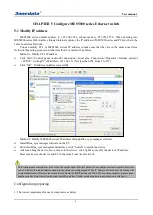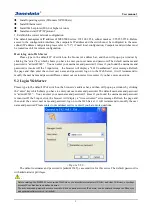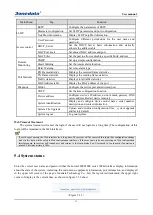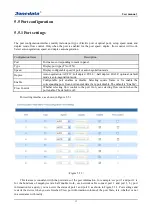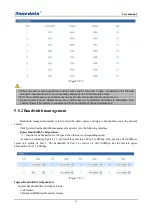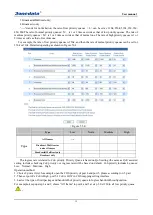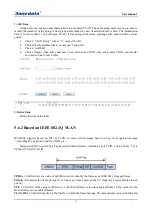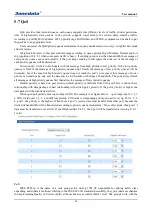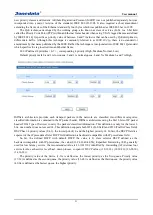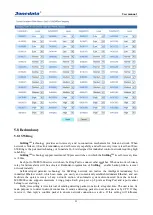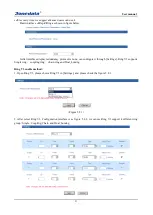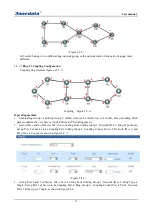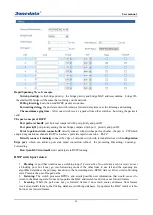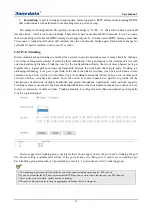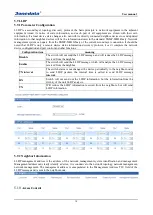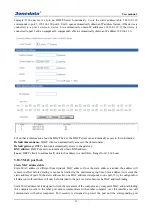
User manual
20
5.7 QoS
QoS provides four internal queues, each queue supports four different levels of traffic, shorter persistence
time of high-priority data packets in the switch, supports lower latency for certain delay-sensitive traffic.
According to port ID, MAC address, 802.1p priority tags, DiONetServ and IP TOS, equipment can be abale to put
the packets to an appropriate level.
Users can select the QOS priority queue mechanism, the queue mechanism in two ways: weighted Fair mode
and strict mode.
Weighted Fair refers to this port sends message according to queue priority High, Medium, Normal and low
in proportion of 8:4:2:1 when some ports traffic is heavy. If sending speed is less than bandwidth, the message of
each priority queues can send normally; if the port keeps sending in full speed, then the rest of the message of
each priority queues will be discarded.
Strict priority: it refers to QoS deals with the message from high priority to low priority. If the low priority
queues is full but the message of high priority queues don‘t finish, the message of low priority queues will be
discarded; but if the speed of high priority queue does not reach the port‘s wire speed, then message of lower
priority can send one by one, and the data may be lost because of shortage of bandwidth. The ports always finish
all messages of high priority queues first then allow the message of lower priority queues
Default priority is based on port priority, default priority is different from COS and TOS, it did not have
relationship with data package, it had relationship with switch port‘s priority. If the port‘s priority is higher, the
data packet will be transferred at first.
When open port priority, must open inspect COS. The example is as figure below: open inspect port, 1, 2, 3,
4 COS, divide port 1, 2, 3, 4 in different priority, COS value corresponding priority no need to set up. Port 1, 2, 3,
4, port 1, the priority is the highest. When these 4 port ‗s receive data must transfer from other port, because the
limited of bandwidth, will be transferred according to priority queue mechanism
(
If use strict mode, then port 1‘s
data must be transferred over at first. If use Weighted Fair 8:4:2:1, the 4 port will be transferred according 8: 4: 2:
1 ratio
)
CoS
IEEE P802.1p is the name of a task group active during 1995–98 responsible for adding traffic class
expediting and dynamic multicast filtering to the IEEE 802.1D standard. Essentially, they provided a mechanism
for implementing Quality of Service (QoS) at the media access control (MAC) level. The group's work with the



